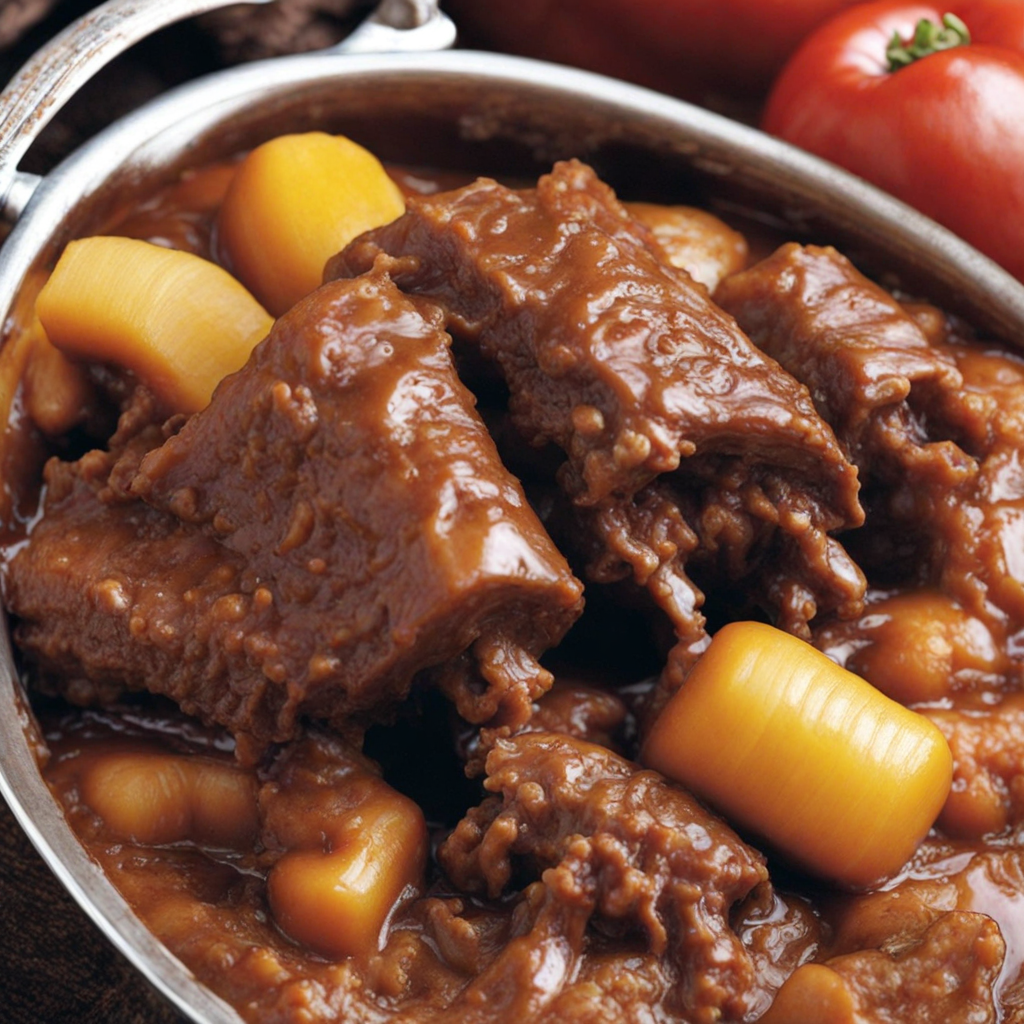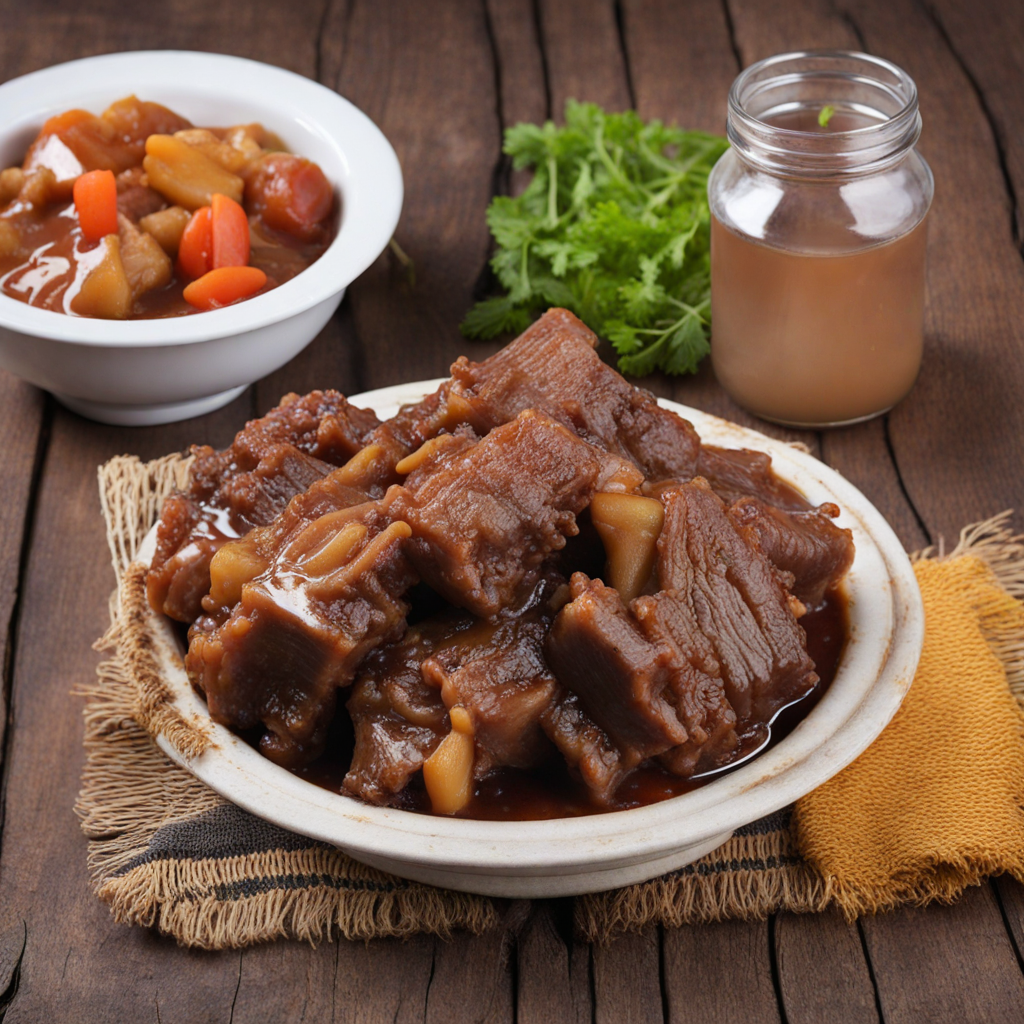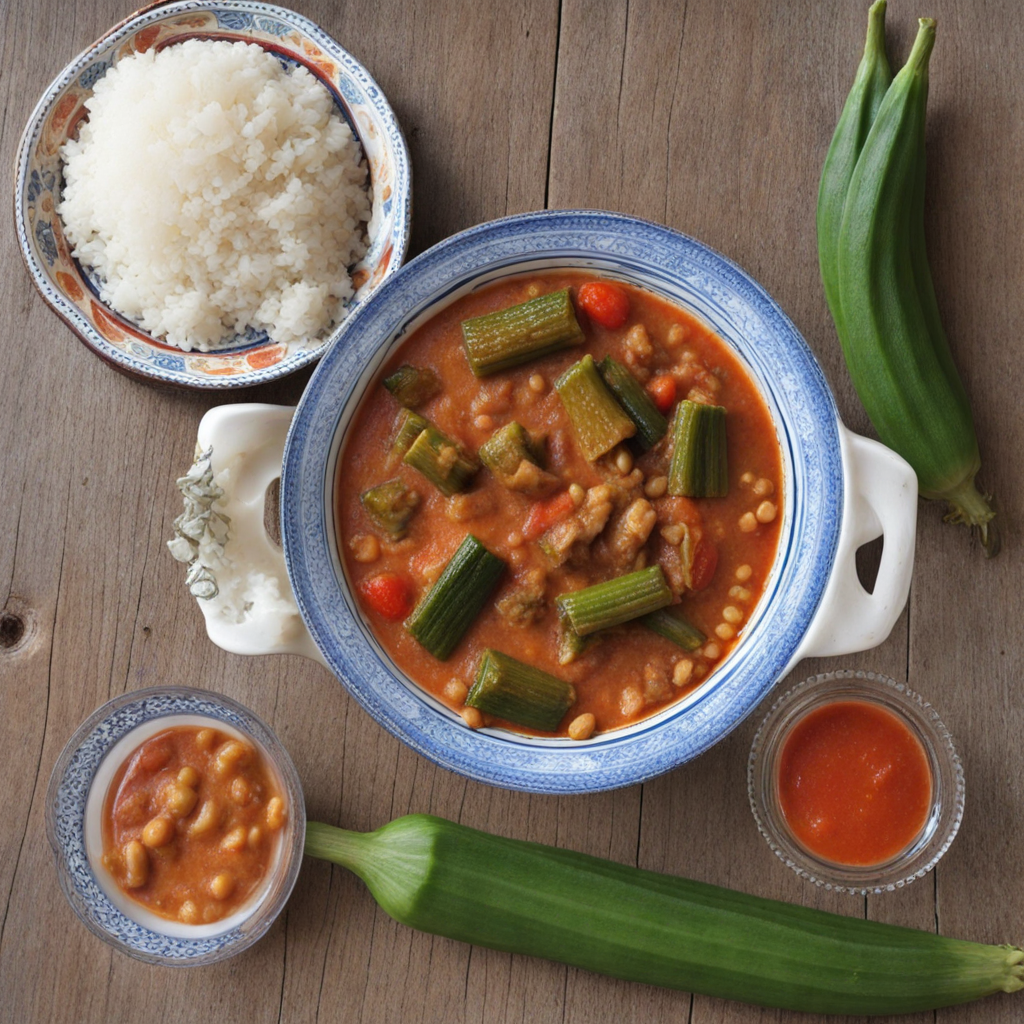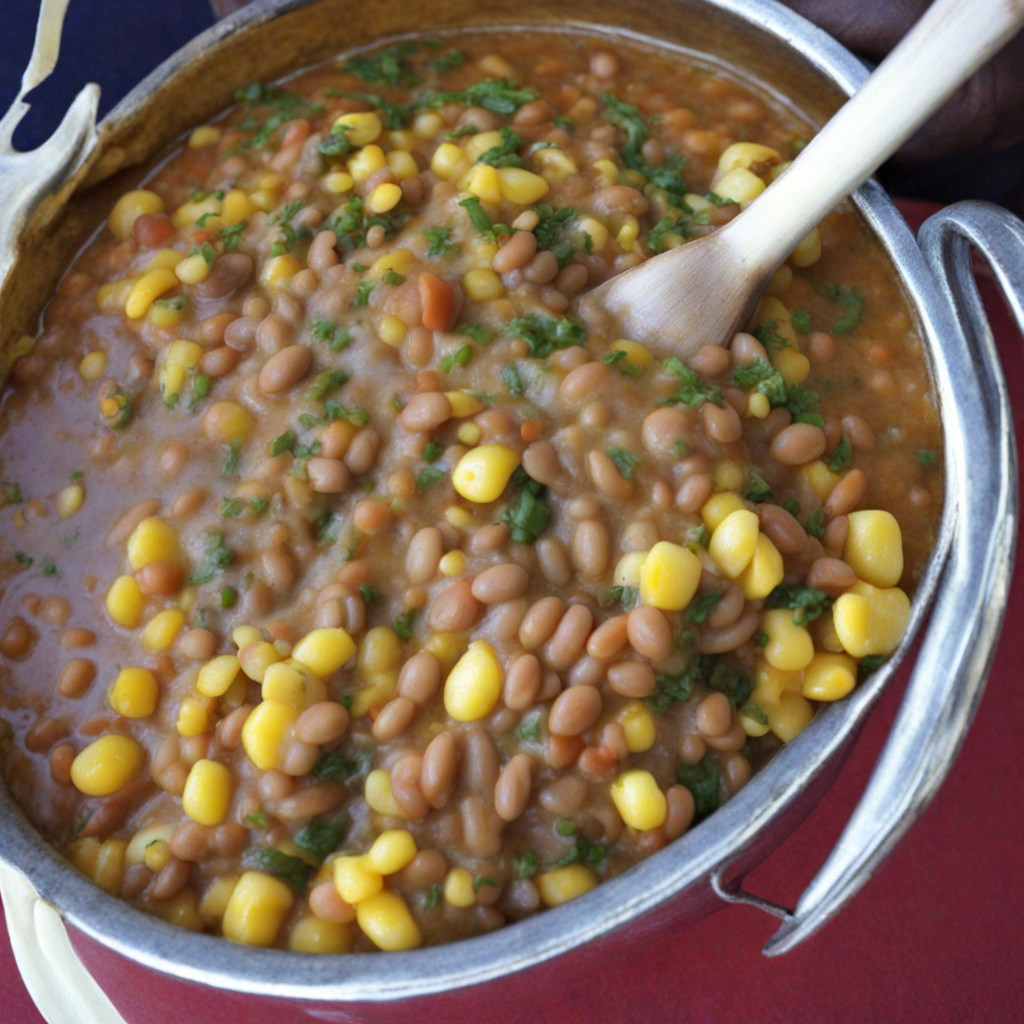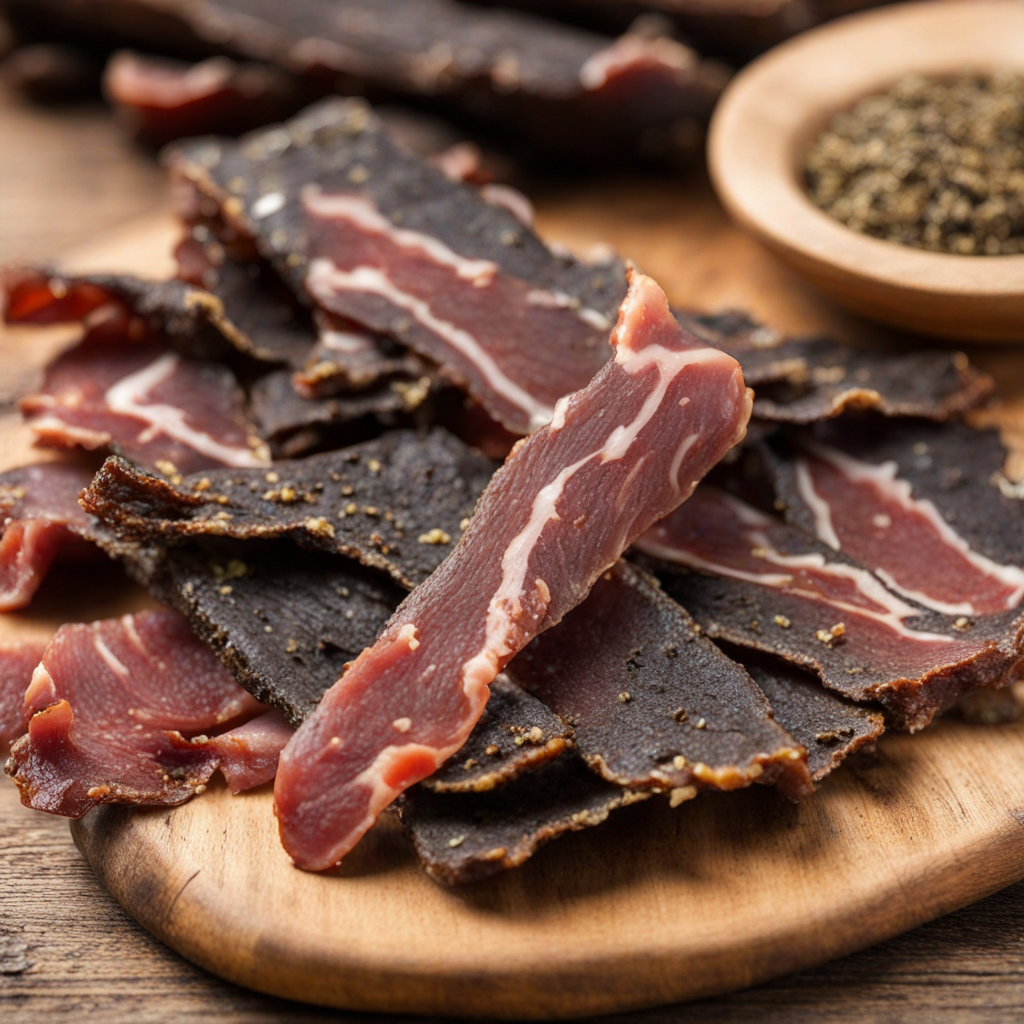Mazondo
Mazondo is a traditional Zimbabwean dish that celebrates the rich culinary heritage of the country, particularly among the Shona people. At its core, Mazondo consists of cow hooves, which are slow-cooked until they become tender and gelatinous. The preparation involves meticulously cleaning the hooves and simmering them with an array of spices and herbs, which infuse the dish with a depth of flavor that is both earthy and satisfying. The texture of Mazondo is unique; the soft, almost buttery consistency of the meat melds beautifully with the rich broth, creating a comforting dish that warms the soul. The dish is often served with sadza, a thick maize porridge that serves as a staple in Zimbabwean cuisine. The combination of Mazondo and sadza is a match made in culinary heaven, as the smooth, creamy texture of the sadza complements the robust flavors of the hooves. Diners often enjoy scooping up the Mazondo with pieces of sadza, allowing the rich broth to soak into the porridge for an enhanced flavor experience. Vegetables, such as collard greens or pumpkin leaves, are typically included as sides, adding a fresh contrast to the hearty main dish. Mazondo is not just a meal; it is an experience that brings people together, often enjoyed during special occasions or family gatherings. The communal aspect of sharing this dish fosters a sense of connection and tradition among those who partake in it. For those seeking to explore new tastes, Mazondo offers a delightful blend of texture and flavor, making it a must-try dish that encapsulates the essence of Zimbabwean hospitality and culinary artistry.
How It Became This Dish
The History of Mazondo: A Culinary Treasure of Zimbabwe Origin and Ingredients Mazondo, a traditional Zimbabwean dish, holds a significant place in the country’s culinary landscape. Its primary ingredient—cow’s feet—reflects the agricultural practices and dietary customs of the people. The term "mazondo" translates to "trotters" in Shona, one of Zimbabwe's predominant languages, and represents a dish that is rich in flavor and history. The origins of mazondo can be traced back to the rural communities of Zimbabwe, where livestock farming has been a vital part of the culture for centuries. Cattle, in particular, are not only a source of meat but also a symbol of wealth, status, and cultural identity. Traditional practices often involve utilizing every part of the animal, ensuring that nothing goes to waste. This ethos of resourcefulness is evident in the preparation of mazondo, where the feet, often considered offal, are transformed into a delicacy. Cultural Significance Mazondo is more than just a meal; it is a cultural experience embedded in the fabric of Zimbabwean society. The dish is often associated with communal gatherings and celebrations. In many households, mazondo is prepared during significant events such as weddings, funerals, and family reunions, symbolizing unity and togetherness. The act of cooking and sharing mazondo fosters social bonds, bringing families and communities closer. In addition to its communal importance, mazondo also carries spiritual significance. In traditional Zimbabwean culture, food plays a crucial role in rituals and ceremonies. The preparation of mazondo can be seen as a way to honor ancestors and invoke blessings. It is not uncommon for families to offer mazondo to guests as a sign of respect and hospitality, reflecting the deep-rooted values of sharing and generosity. Preparation and Serving The preparation of mazondo is a labor-intensive process that varies from region to region, with each community adding its unique twist. Typically, the cow’s feet are thoroughly cleaned and boiled for several hours until they become tender. This slow-cooking method allows the collagen in the bones to break down, creating a rich, gelatinous broth that forms the base of the dish. Once the feet are tender, they are often flavored with a variety of spices and ingredients. Common additions include onions, garlic, tomatoes, and chili peppers, which enhance the dish's flavor profile. The use of local herbs, such as dhania (coriander), further elevates the taste, making mazondo a fragrant and aromatic dish. Mazondo is traditionally served with sadza, a staple food made from maize meal, which is a fundamental component of Zimbabwean cuisine. The combination of the rich, flavorful mazondo and the dense, comforting sadza creates a satisfying meal that nourishes both body and soul. The dish is often accompanied by leafy greens, such as rape or chibage, providing a balance of flavors and nutrients. Evolution Over Time As Zimbabwe has evolved, so too has the dish of mazondo. The advent of urbanization and globalization has influenced culinary practices, leading to the introduction of new cooking techniques and ingredients. While traditional methods remain prevalent, modern interpretations of mazondo have emerged, appealing to younger generations and urban dwellers. In urban settings, mazondo is increasingly found in restaurants and food stalls, catering to a diverse clientele. Chefs are experimenting with presentation and flavor combinations, incorporating elements from other cuisines while still honoring the dish's traditional roots. This fusion approach allows mazondo to reach new audiences, introducing it to those who may not have grown up with it. Despite these changes, the essence of mazondo remains intact. It continues to be celebrated as a symbol of Zimbabwean identity and heritage. Annual food festivals and cultural events often feature mazondo as a highlight, showcasing its significance in the nation’s culinary narrative. Challenges and Resilience The journey of mazondo is also intertwined with the broader socio-economic challenges faced by Zimbabwe. Economic hardships, including inflation and food insecurity, have affected access to ingredients and the ability to prepare traditional meals. However, the resilience of Zimbabwean culture shines through in the way communities adapt. In many rural areas, families continue to rear livestock, ensuring that mazondo remains a staple. Furthermore, community initiatives aimed at preserving traditional cooking methods and recipes are helping to keep the culinary heritage alive. Workshops, cooking classes, and cultural exchanges are being organized to educate younger generations about the importance of mazondo and other traditional dishes. Mazondo in the Global Context As the world becomes more interconnected, traditional dishes like mazondo are gaining recognition beyond Zimbabwe's borders. Diaspora communities have played a crucial role in introducing this delicacy to international audiences, often sharing it in potlucks, cultural festivals, and culinary events. Food enthusiasts and chefs around the world are increasingly interested in exploring authentic African cuisines, and mazondo serves as a compelling representation of Zimbabwean culinary traditions. Social media platforms have furthered this trend, allowing for the sharing of recipes, cooking videos, and personal stories associated with mazondo, fostering a sense of global community around this cherished dish. Conclusion Mazondo is much more than a simple dish; it is a testament to the history, culture, and identity of Zimbabwe. From its humble beginnings as a resourceful means of utilizing every part of the animal to its place as a beloved staple in both rural and urban settings, mazondo embodies the spirit of Zimbabwean resilience and hospitality. As it continues to evolve and adapt, mazondo remains a powerful symbol of community, tradition, and the enduring connection between food and cultural identity. In every bite, one can taste the rich history and the stories of the people who have cherished and preserved this culinary treasure for generations.
You may like
Discover local flavors from Zimbabwe


